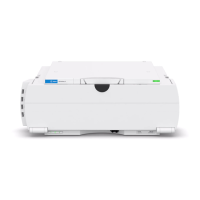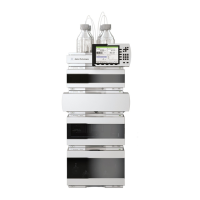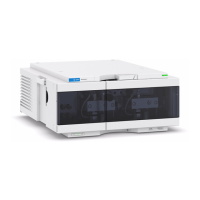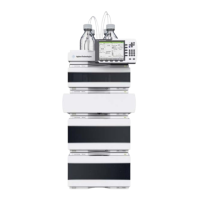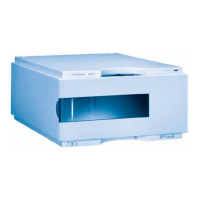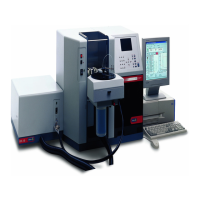60 Purification Solution - Developer's Guide
6
Calibration Procedures
Characterizing the delay volumes: Mixing point to UV detector and Column to UV detector
9 Open the Sample Info dialog box, clear Vial/Location (blank run), enter a run
name and click Run Method.
10 Stop the run 2 min after the acetone UV signal has reached maximum
absorption.
11 Evaluate the collected data (time in min and flow in mL/min):
a Determine the elution time of acetone (t
1
) at one half of its UV signal
height. See Determining the elution time of acetone for more details
(“Determining the elution time of acetone” on page 60).
b Calculate the Volume mixing point to UV detector (t
MIX/UV
) as the difference
between the programmed and the actual elution times (subtract 2 min in
this case) and multiply the result by the flow rate (2 mL/min): V
MIX/UV
=
2 × (t
1
– 2).
c Subtract the volume of the restriction capillary, if used (0.12 × 2000 mm
is 0.023 mL).
12 Run the procedure twice, and check if the determined volumes differ by less
than 5 %. If not, repeat the procedure until the values are reproducible.
13 Repeat the procedure for the other flow path.
Determining the elution time of acetone
1 Open the appropriate data file with the recorded acetone UV trace (263 nm
without reference).
2 Determine the absorbance at half the acetone UV signal height (A
1/2
) with
precision of about 0.1 mAU:
• Zoom in to the baseline before the elution of acetone and note this
absorbance as A
1
.
The reason for temporal irreproducibility of the measured volume can be, for example, the
presence of air bubbles in the system (especially in the mixer or pump pistons) that can
happen in a new or modified system, or when solvent bottles were exchanged. To improve
performance, purge the pumps with a high flow, remove the restriction capillary (if
present) and then set an acceptably high flow (respecting the UV cell pressure limit) to the
whole system for a few minutes to flush out potential bubbles.
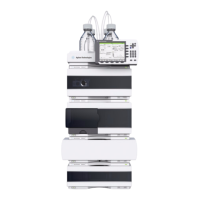
